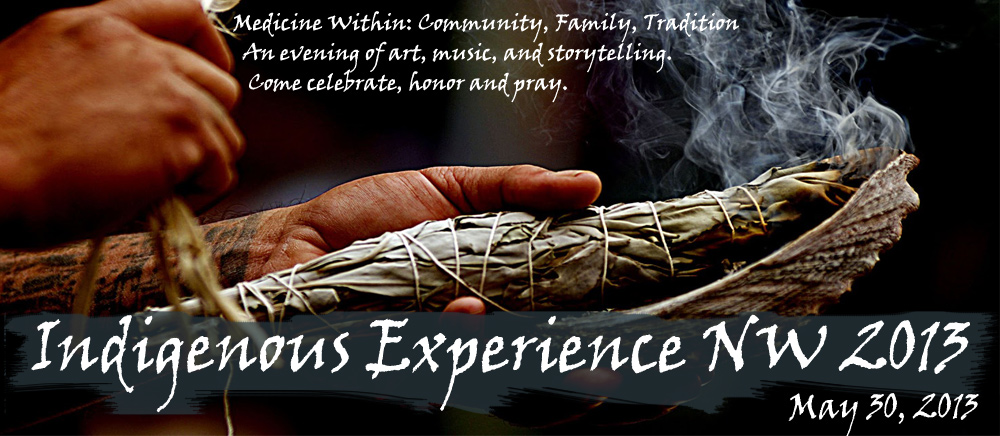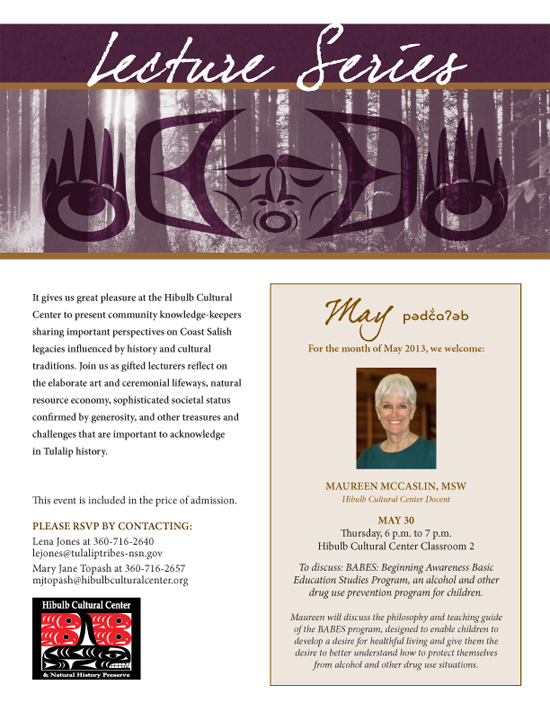Indian Country Today Media Network
It’s on for June. Family reunion at 20,000 feet. Don’t forget the axes, the rope—and the documentary guy.
At the summit of Denali this summer, blood descendants of the first climbing party to stand atop North America’s highest mountain are hoping to mark the 100-year anniversary by retracing the original route, ascending 20,320 feet.
The original climb a century ago was a feat powered in part by young Alaska Natives, and one of the aims of this year’s effort is to inspire Native youth through interactivity and live-blogging during the climb.
Walter Harper, a strong young Athabascan Indian, was the first person to reach the summit on June 7, 1913, in a party organized by Hudson Stuck and Harry Karstens. Here is how Stuck wrote of the moment in Scribner’s Magazine of November 1913: “Walter, who had been in the lead all day, was the first to scramble up: a Alaska Natives, he is the first human being to set foot upon the summit of Alaska’s great mountain and he had well earned the lifelong distinction.”
Although the honor has faded over time—these climbers are far less well-known than Sir Edmund Hillary, for instance—the ascent was long and arduous, as they navigated slopes covered with ice blocks jumbled by an earthquake, and coped with a devastating fire on the mountain that destroyed quite a bit of gear.
Stuck, the Episcopal archdeacon of the Yukon, a diocese covering the vast interior of Alaska, could be considered the brains of the expedition. Karstens, a legendary musher and freight hauler, the brawn.

The strain of the climb and the more than three months they spent together frayed the relationship between Stuck and Karstens—they never spoke again. Their split, plus the early deaths of Harper and Stuck, meant the climbers on this year’s anniversary expedition hardly knew of their shared history as they were planning separate centennial observances. “The serendipity on this thing is amazing,” says Ken Karstens.
Karstens and his cousin Ray Schuenemann are great-grandsons of Harry Karstens, a robust Alaska pioneer. Ken Karstens says a treasure trove of family history about Denali lay hidden until the early 1990s when a great-grandmother, on her deathbed near Dallas, revealed the location of three trunks stored in a barn that were full of Harry Karstens’s journals, correspondence and even gold nuggets from the Klondike.
Meanwhile, Daniel Hopkins, a great-great-nephew of Hudson Stuck, also had his connection to Denali belatedly revealed when he was having tea with his grandfather in England. He had been regaling the old man with tales of bears he had seen in Alaska as a 13-year-old volunteer on a guided summer adventure tour to retrace part of the Klondike Trail when his grandfather, “turned white as a ghost and went up to the bookshelf,” Hopkins says.
His grandfather pulled down an old copy of Ten Thousand Miles With a Dogsled, written by Stuck and asked, “Do you have any idea that this is your great uncle?”
The revelation that he’d inadvertently been following in his great-great-uncle’s footsteps struck him deeply, Hopkins recalls, but it wasn’t until 2007, “when my wife asked me what was my dream,” that he realized he wanted to climb Denali to honor the legacy.
Hopkins reached the summit in 2008 with a group that ascended by the popular West Buttress Route, which had been pioneered in 1951. While at the park he met one of Denali’s legendary figures, National Park Service Mountaineering Ranger Roger Robinson, who has spent more than three decades at the mountain.
Hopkins had also been introduced via e-mail to filmmaker Elia Saikaly, and it turned out they were virtually neighbors in Ottawa. Coincidentally, Saikaly was headed for Denali in 2008 as Hopkins was leaving and the two met in an Anchorage hotel room to talk about life-dreams and stories.
“Serendipity is a very good word,” says the adventure filmmaker and high-altitude climber Saikaly of his part in the Denali climb. Five years ago, he was a mountaineering newbie headed to the Himalayas to start a film project, FindingLife, to honor a mentor who had died on Mount Everest. “At that point, I had never slept in a tent.” He got an e-mail from a fellow who also lived in Ottawa, Dan Hopkins, laying out a similar project of following an ancestor up a different mountain.
“It started out as a simple concept of Dan retracing Hudson Stuck’s footsteps. At the time we didn’t know all these other family members were out there,” Saikaly says. “It’s evolved beautifully over these last four or five years.”
As he headed to Denali, Saikaly also ran across Ranger Robinson. “I met Dan Hopkins, he’d come through and visited here at the ranger station. And Elia too,” Robinson recalls. “They weren’t together but they were both talking about the same cause, trying to do a centennial climb.”
And, Robinson adds, “It wasn’t new to me.” Turns out he had also fielded a phone call from Mike Harper, a descendant of Walter Harper, who was also seeking information about a centennial climb.
“Really, the central figure in all this is Roger Robinson,” says team member Sam Alexander, of the Gwich’in Nation from Fort Yukon, the village where Hudson Stuck is buried and where 1913 team member John Fredson is a revered political figure. Alexander adds that Robinson “knew that I wanted to do the climb because he had met my brother, and he had met Ken Karstens. He knew Dan Hopkins. But none of us knew each other. It was through Roger that we all got connected.”
Also in this mix was Mark Lattime, the Episcopal bishop of Alaska, who was seeking some way of honoring his church forebear, Hudson Stuck, who in 2009 had been named to the roll of Episcopal Holy Women, Holy Men. “We wanted to do something to commemorate the 100-year anniversary,” Lattime says. “I talked about getting a plane and flying onto the glacier as high as we could and do a service or something of that nature.”
Serendipity stepped in again during the diocesan convention in Wasilla, Alaska last year when a woman who had caught wind of a possible memorial service came up to Lattime and introduced herself as Joanne Harper, another descendant of Walter Harper, and told him there was a mountain climb in the works, which included Dana Wright, a back-country snowboarder and great-grandnephew of Walter Harper.

Lattime was in. “I thought, Wow, now that’s cool! Let’s do that and we can really make something grand about it,” he recalls.
Suddenly all the frayed threads from 1913 had been rewoven. Wright represents Harper. Ken Karstens and Schuenemann are representing Harry Karstens. Hopkins is kin to Stuck. Lattime brings the church element of Stuck.
Alexander carries cultural kinship to Fredson. And in April, Sam Tatum, a great-nephew of the final 1913 climber, Robert Tatum signed on. And Saikaly will film it all—live action and historical recreation.
The 2013 team begins its ascent on June 7, the day the original crew reached the summit. “All of a sudden I was caught up in this whirlwind…and what really moved me is that this is a wonderful way to draw attention to the achievement of that first climb but also to really tell the story of Walter Harper as the first one to set foot on the top of the mountain,” Lattime says. “Especially in this diocese, where we have so many young people who are struggling.… We have very high incidences of suicide here and abuse of alcohol and drugs.”
With its ambition to inspire students—especially Native youth—Lattime senses a connection back to Stuck, who chose three Alaska Natives students in Walter Harper, John Fredson and Esaias George to teach and mentor. Harper, 20 at the time of the climb, had worked with Stuck for several years. Fredson and George were each only 14. Stuck not only included them in the climb, but also tutored them intensively for a far tougher climb—to become leaders in their communities and navigate a changing world.
“Stuck certainly grieved the loss of culture that he was seeing in the Native community. It was extremely important to him that people embrace their culture and sustain their culture but it was equally important to him that they be successful in both worlds,” Lattime says.
Harper and bride Frances Wells—they had been married by Stuck only weeks earlier—were en route to Seattle in 1918, with Harper eventually hoping to pursue a career in medicine. But the ship, the S.S. Princess Sophia, ran aground in a channel off Juneau and sank with the loss of all 343 aboard.
Stuck died in Fort Yukon two years later of pneumonia.
It fell to Fredson to attend Stuck’s alma mater, Sewanee: the University of the South, in Tennessee and become the first Alaska Native to graduate university in 1930.
Fredson went on to become a potent leader—primary founder of the Venetie Reserve, a champion for hunting and fishing rights, teacher and creator of hospitals in remote communities such as Fort Yukon, where Native people had no resistance to disease. Many of these issues on sustainability, fisheries protection and education remain important today. “That’s the legacy of Hudson Stuck and John Fredson—Native people need to have a voice and have a say about what goes on here. We have a right to self-determination,” Alexander says. “Let’s start by saying this mountain is Denali.”
Stuck refused to call the mountain McKinley—which is how it is identified on most maps—saying it is a dishonor to toss aside 10,000 years of local identity for a distant president.
The 2013 expedition is retracing the original Muldrow Glacier route. It takes about a week longer, starts way lower, has a higher difficulty rating than the West Buttress route, which was created 62 years ago. The group will be guided by Alaska Mountaineering School, which has already cached 16 boxes of supplies along the route, taken in by dogsled in early March.
This year’s climbers say they expect a challenge—they have been especially diligent about practicing crevasse rescues for their traverse of the Muldrow Glacier—but remain astonished at the challenges their ancestors overcame.
Climbing a year after a magnitude 7.2 earthquake struck along the Denali fault in 1912, the original party was confronted by an unexpected obstacle, as Stuck wrote: “What a discouraging prospect stretched before us! Mile upon mile of huge ice blocks, heaped in confusion, resting at every insecure angle, some on their points, some on their edges, with here and there gaps that went down to the black rock, and here and there pinnacles that soared to forty or fifty feet in the air, and everywhere the snow-slope under them falling away too steeply for any passage.… ”
But they did not stop. Harper and Karstens, the two strongest, took turns chopping three miles of stair-steps up the jumbled ice with ice axes and coal shovels. It took them three weeks.
And it wasn’t an easy place to work. Stuck again: “On either side the ridge fell precipitously to a glacier floor, five hundred feet below on the one hand, fifteen hundred feet below on the other.… ”
Along the way they suffered a fire in camp, believed to have been sparked by a match that either Stuck or Karstens carelessly tossed as the two men lit their pipes after lunch. The blaze destroyed tents and clothing and film. From Harper’s diary:
“02 May 1913—All the sox and stockings, all the sugar and Archdeacons films and 3 silk tents which were proposed for up above were burnt, and 2 shovels, an axe, some dog fish [salmon], all the milk, some butter and some baking powder, one or 2 overalls and Mr. Karstens’ fur parka.”
Harper and Fredson returned all the way to base camp to bring back canvas sled covers to be sewn into a new tent. The camel’s-hair lining of a sleeping bag was made into a dozen pair of socks.
Robert Tatum says the new tent was so small that if one guy wanted to roll over in the night, he gave a signal and all turned at once.
With all the staging and restaging of supplies at their various camps, Stuck estimated that each man climbed 60,000 feet on the 20,000-foot mountain.
On June 7, Stuck describes a sunny day so bitter cold he could not feel his hands or feet—he was so short of breath that the other men hauled him the last 100 feet to the summit, where he passed out briefly.
The team said a quick prayer on top of the world, then set up instruments to take barometric readings and other observations. And there was the view that no one had seen before. Stuck writes, “In the distance, the snow-covered tops of a thousand peaks dwindled and dwindled away, floating in the thin air….” And above, he added, “the sky took a blue so deep that none of us had ever gazed upon a midday sky like it before.… It was a deep, rich, lustrous, transparent blue…a hue so strange, so increasingly impressive that to one at least it ‘seemed like special news of God.’ ”
By the end of June, the climbers on this year’s anniversary ascent will hope for not just a reunion with the past, but for communion with the beauty their forebears saw.
Read more at https://indiancountrytodaymedianetwork.com/2013/05/31/100-years-after-historic-denali-climb-descendants-do-it-again-149629





















